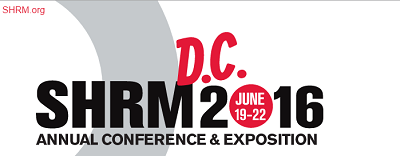Early June is typically a time of reflection and analysis of what worked and what did not in terms of your strategy and execution. Many of our clients are now planning their Fall 2016 strategy retreats and/or team development sessions. A word of caution- in today’s markets of light speed change, yesterday’s tactics to running a business or applying outdated management techniques to contemporary problems will quickly make you vulnerable. In this “Uberized” economy, moving beyond the status quo has never been more important. For those reasons, we’ve continued to put a focus on the concept and methods that represent “next practices”.
Next Practice development isn’t necessarily about making something more efficient – it entails a fundamental transformation of the core business culture and mindset to ensure that all the moving parts of a business are aligned and effective.
Some of the key elements necessary to understand and build Next Practices are:
Best practices are past driven – repetitive formulas for tactical business problems. (By the way, they’ll often get you to the same level of mediocrity as your competition.)
Next practices are future-driven strategic solutions that enable you to better anticipate, plan and respond to changing market and internal needs.
Here is the framework, and in our subsequent articles and live C-suite forums we will continue to showcase individuals and companies who are reaping the benefits of this thinking:
The Need: Every organization needs to get past legacy thinking in order to create transformation and change that will enable it to effectively respond to challenges and obstacles to its growth. “This is the way we have always done it” remains the biggest obstacle to real breakthroughs.
Beyond Best Practices: Conventional Best Practices tend to be proven, locked down business techniques that can be re-executed successfully on demand at the middle management level. There are few such “Best Practices” for C-level executives who face a constant flow of new challenges, unforeseen problems and marketplace conditions beyond the reach of conventional thinking.
Business Intelligence: A Next Practices approach offers flexible tools, frameworks and situational analysis methods that enable executives to get a clear view of the current situations they face and frame intelligent responses to it. Seeing the unseen and often “covert” trends is the objective.
Moving Parts: This approach includes policies, practices, behavior models and performance techniques, used in combination with highly collaborative and cross-functional communication between people. Taken as a whole, this approach enables leaders to be exponentially more effective in directing change.
Metrics: Next Practice methods are designed to be measurable so that their effectiveness can be understood and assessed.
Cross-Functional Focus: Next Practice thinking requires a cross-functional focus in which problems are addressed by stakeholders from all areas related to a given topic or problem area. The Next Practice philosophy considers it essential to have people of different perspectives working on a challenge simultaneously, in a holistic way, to effectively and successfully arrive at a solution.
Collaboration is Key: Next Practices assume a high level of collaboration between stakeholders at all levels – from senior executives to management to staff – in working on any business initiative or challenge. Power derives from the diversity of ideas and collaboration around those ideas- and, the ability to converge and act on those ideas in a market timely fashion.
Our business advisory group, Nextworks Strategy( www.nextworksstrategy.com), supports the ENP Forums, which is comprised of hundreds of top executives and thought leaders has for several years been focused on the concept of “next practices”. Join us there to explore this new approach at one of the meeting or other keynote events where we will be speaking- please refer to the links www.enpinstitute.com/events or https://scotthamiltonnext.com/speaking/
Contact the author at scott@scotthamiltonnext.com or 888.857.9722



